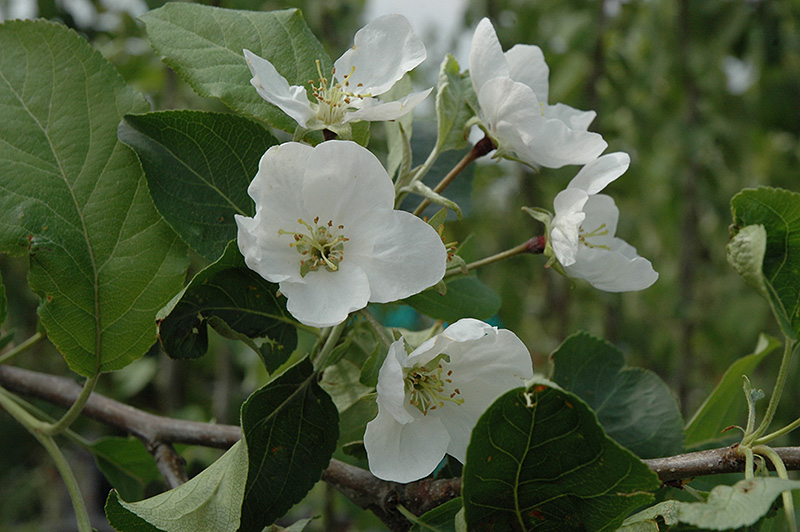Plant Finder
* This is a "special order" plant - contact store for details
Height: 20 feet
Spread: 20 feet
Sunlight:
![]()
Hardiness Zone: 3a
Description:
A stunning applecrab that is a cross between Rescue and Trail varieties; delicious small sweet fruit is perfect for jellies, juices, and fresh eating, stores very well
Edible Qualities
Shafer Applecrab is a small tree that is commonly grown for its edible qualities. It produces small red round apples (which are botanically known as 'pomes') with creamy white flesh which are usually ready for picking from early to mid fall. The apples have a sweet taste and a firm texture.
The apples are most often used in the following ways:
- Fresh Eating
- Preserves
- Juice-Making
Features & Attributes
Shafer Applecrab is covered in stunning clusters of fragrant white flowers along the branches in mid spring. It has dark green deciduous foliage. The pointy leaves turn yellow in fall. The fruits are showy red apples carried in abundance from early to late fall. The fruit can be messy if allowed to drop on the lawn or walkways, and may require occasional clean-up.
This is a deciduous tree with an upright spreading habit of growth. Its average texture blends into the landscape, but can be balanced by one or two finer or coarser trees or shrubs for an effective composition. This plant will require occasional maintenance and upkeep, and is best pruned in late winter once the threat of extreme cold has passed. It is a good choice for attracting birds to your yard. Gardeners should be aware of the following characteristic(s) that may warrant special consideration;
- Messy
Aside from its primary use as an edible, Shafer Applecrab is sutiable for the following landscape applications;
- Accent
- Shade
- Orchard/Edible Landscaping
Planting & Growing
Shafer Applecrab will grow to be about 20 feet tall at maturity, with a spread of 20 feet. It has a low canopy with a typical clearance of 4 feet from the ground, and is suitable for planting under power lines. It grows at a medium rate, and under ideal conditions can be expected to live for 50 years or more.
This tree is typically grown in a designated area of the yard because of its mature size and spread. It should only be grown in full sunlight. It prefers to grow in average to moist conditions, and shouldn't be allowed to dry out. It is not particular as to soil type or pH. It is highly tolerant of urban pollution and will even thrive in inner city environments. This particular variety is an interspecific hybrid.
* This is a "special order" plant - contact store for details
